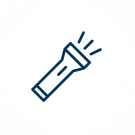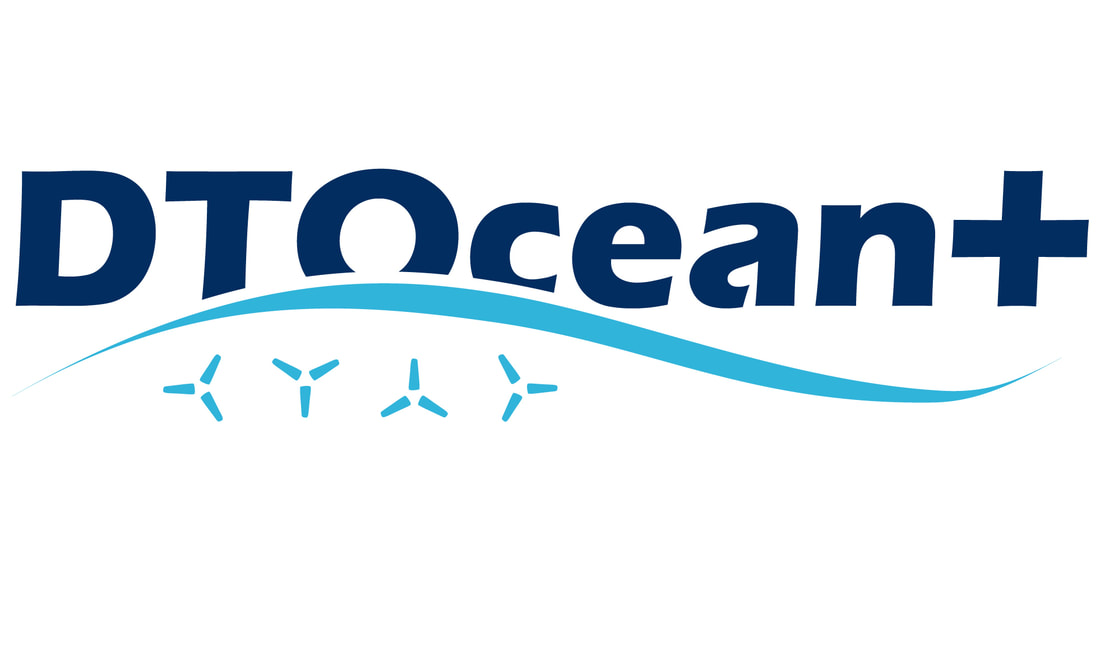
Background
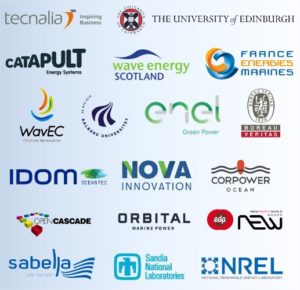
DTOcean+ consortium.
The H2020 funded DTOcean+ project is developing a novel framework for the standard representation of data formats for ocean energy systems.
An ETIP Ocean webinar was held on 22/01/20 to present the DTOcean+ Deliverable led by TECNALIA 7.1 “Standard Data Formats of Ocean Energy Systems”. The webinar has been recorded and can be accessed here. Please find here the links to the deliverable and the webinar presentation.
Motivation and objective
There is currently no standard method of describing the key characteristics and attributes of Ocean Energy technologies. Without such a standard, it can be difficult, if not impossible, to objectively analyse innovative technologies and compare competing technologies.
Therefore the DTOcean+ project has defined a Digital Representation for the elements of ocean energy systems. The so called Digital Representation aims at:
- Providing a common language and architecture for storing project information.
- Facilitating data and information exchange among different stakeholders.
- Enabling objective comparisons between various technologies.
- Enhancing the ability of sector stakeholders to work collaboratively.
Methodology
This work aims at fully describing the data used for a generic ocean energy system design in a structured manner. This has been done by means of the definition of a Digital Representation for the elements of the whole system at different levels of aggregation (i.e. array, devices, sub-systems, and components) and accounting for different levels of complexity of the project.
When analysing an ocean energy project, attention should be focused not only on physical system assets, but also on other important characteristics, such as the deployment site and the operational phases of the project lifecycle, from the subsystem installation to decommissioning.
In order to fully capture the main aspects of an ocean energy system, the present digital representation framework has accounted for:
- Elements of the technology design (physical domain), phases of the technology lifecycle (process domain) and constraints from the context (external environment)
ex: a mooring line (technology design) during the installation (phase) on a specific deployment site (context) - A vertical dimension, that describes a set of hierarchical connections among families, groups, subsystems and components,
ex (focus on technology design): array -> floating wave energy devices -> mooring systems -> anchors - A transversal dimension, accounting for the individual and specific components of the system.
ex: interactions between an umbilical cable (technology design) during a decommissioning operation (phase) and a vessel route (environment)
Data formats to describe each subsystem of an ocean energy system are included in the annex of the deliverable D7.1.
ExampleS
The deliverable D7.1 describes the needs, features and structure of the Digital Representation, and provides some actual implementation examples:
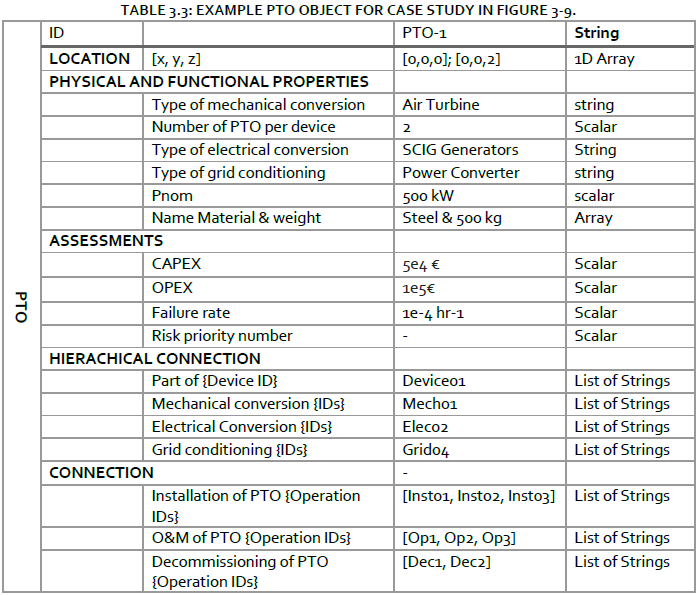
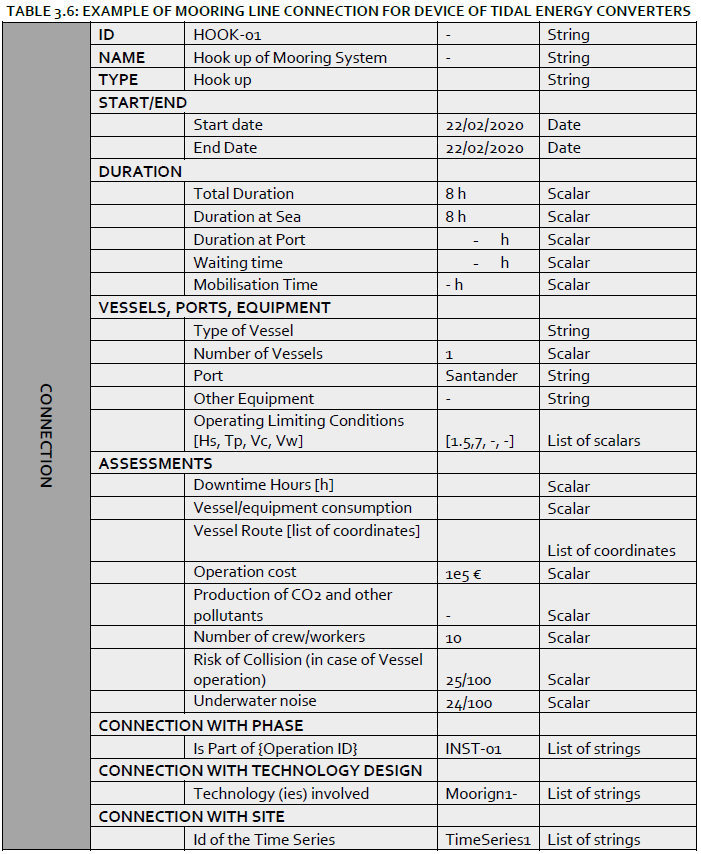
Further work
First, the Standard Data Formats for ocean energy systems will be implemented in the different tools and modules developed within the DTOcean+ project. It will be used in the various validation scenarios planned in the project.
The concept of Standard Data Formats will also be presented more widely to ocean energy stakeholders through conference papers (EWTEC 2019, ICOE 2020), scientific publications and webinars.
About DTOcean+
DTOcean+ (2018-2021, 8M€) will accelerate the commercialisation of the Ocean Energy sector by developing and demonstrating an open source suite of design tools for the selection, development, deployment and assessment of Ocean Energy Systems (including sub-systems, energy capture devices and arrays).
The DTOcean+ partners include Tecnalia, Aalborg University, Bureau Veritas, Corpower Ocean, EDF, Enel Green Power, Energias de Portugal, Energy Systems Catapult, France Energies Marines, IDOM, NREL, Naval Energies, Nova Innovation, Open Cascade, Orbital Marine Power, Sabella, Sandia National Laboratories, the University of Edinburgh, WavEC and Wave Energy Scotland.
